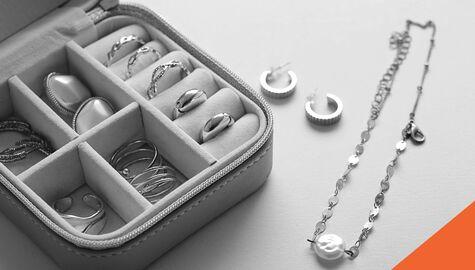When Should You Replace Your Tires?
Wednesday, 12 March 2025
Your tires are one of the most important parts of your car. However, tires wear out over time, causing them to lose tread and traction, which increases the risk of skidding and hydroplaning. With that in mind, knowing when to replace your tires is essential for maintaining control of your vehicle and ensuring your safety. In this blog, we’ll cover key signs that indicate it’s time to look into replacing your tires and provide essential tips for keeping your vehicle road-ready.
Please note: This blog provides a general overview of tire maintenance and auto insurance. It is not all-encompassing and should not be taken as specific advice. Be sure to discuss your unique circumstances with a licenced insurance broker and/or auto mechanic to receive guidance tailored to your situation.
How Often Should You Replace Your Tires?
So, when should you replace your tires? Generally speaking, tires should be changed about every six years. While driving less can help extend the lifespan of your tires, it’s important to note that tires deteriorate even if they aren’t used frequently. However, certain factors - like your driving habits, road conditions, and weather - can shorten this lifespan.
The Coin Test: A Quick Way to Check Tread Depth
Tread depth refers to the measurement of the grooves on your tire’s surface, which are crucial for providing grip and traction on the road. The deeper the tread, the better the tire can grip the road. As your tires wear down, the tread becomes shallower, reducing their effectiveness.
One of the simplest ways to check the condition of your tires is by using a Canadian nickel. Here’s how it works:
- Take a nickel and place it upside down into the tread groove with the Queen’s head facing you.
- If the top of the Queen’s crown is visible, your tire is below 2/32”, which means you should look into replacing your tires.
Anything less than this depth may not provide the traction needed for safe driving. It's always better to replace tires before they reach this point to ensure your safety on the road.
When to Replace Tires: Signs of Tire Wear
Cracks and Signs of Weathering
As mentioned, rubber degrades over time, so inspect your tires regularly. If you notice deep cracks or small fissures extending across the tire’s surface, it’s a clear sign that you need to replace the tire. Move your vehicle into good lighting and check it from all angles. If you can see exposed threads through the cracks, it’s likely time for a tire change.
Uneven Wear, Bubbles, and Blisters
Tires should wear evenly. If you notice uneven tread wear, it could mean your alignment is off, while bubbles and blisters may indicate that your tires are not properly inflated. If left unaddressed, this could lead to a blowout, which could cause significant damage.
Vibrations at High Speeds
If your vehicle vibrates while driving at high speeds, it could be due to uneven wear or poor tire balance. However, other issues - such as misalignment or suspension problems - can also cause vibrations. If you experience this, have your tires checked by a professional to determine if you need new tires.
Checking Tire Age: DOT Code
Even if your tires look fine, their age can still be a risk. Older tires are more prone to blowouts and other failures. To check their age, look for the Department of Transportation (DOT) code on the sidewall of the tire. The last four digits indicate the week and year the tire was manufactured. For example, “4119” means the tire was made during the 41st week of 2019. Make a note of this date and consider replacing your tires if they are more than six years old.
Do Tires Affect Car Insurance Rates?
While the condition of your tires won’t directly increase your rate, failing to maintain them could impact your coverage in the event of an accident. If an insurer determines that poor tire condition — such as bald or damaged tires — contributed to a collision, they may deny your claim. Keeping your tires in good shape is not only important for safety but also for ensuring your coverage remains intact.
Additionally, many insurance providers offer discounts for installing winter tires during the colder months. Equipping your vehicle with winter tires, also known as snow tires, can improve traction and reduce the likelihood of accidents, making you a lower-risk driver in the eyes of insurers. To take advantage of potential savings, contact your BIG broker to see if your provider offers a winter tire discount.
When to Change Winter Tires for All-Seasons
If you use winter tires, you should switch them out for all-seasons or summer tires when temperatures consistently stay above 7°C. In most Canadian provinces, this typically happens around mid-to-late April. Keeping winter tires on in warmer weather can cause excessive wear, as they are designed for colder conditions and may degrade more quickly in the heat.
That said, it’s important to note that if you receive an insurance discount for using your winter tires, your provider will require you to keep them on for a specified period of time. Make sure you confirm any specific requirements regarding the timing of your change to maintain your eligibility for your discount. This will also help you avoid any issues if you need to file a claim following an accident.
Tire Maintenance Tips to Extend Their Life
Taking proper care of your tires will help you get the most out of them. Here are a few tips to keep in mind:
- Keep tires properly inflated according to the manufacturer’s specifications.
- Rotate and balance your tires at recommended intervals to ensure even wear.
- Avoid potholes and rough roads whenever possible.
- Drive at steady speeds to prevent premature wear.
- Avoid excessive high-speed driving, which generates heat and breaks down rubber compounds.
Replacing your tires is key to maintaining your vehicle’s performance and keeping you safe on the road. While investing in new tires may feel costly, it’s a crucial step in ensuring optimal traction and control, especially in challenging weather conditions. Furthermore, pairing proper tire maintenance with the right car insurance can help you stay protected whenever you get behind the wheel. If you’d like to explore your car insurance options, a BIG broker can help you find competitive rates without compromising coverage. Get a free quote today to learn more!



